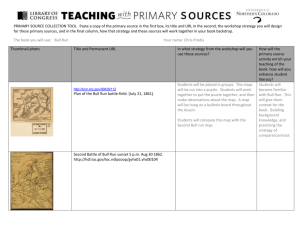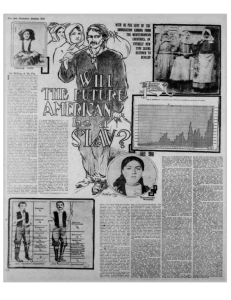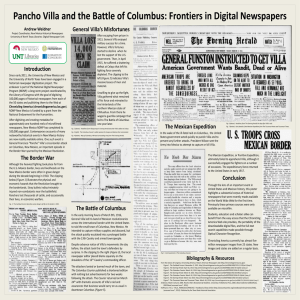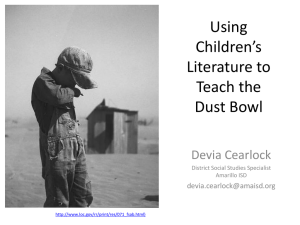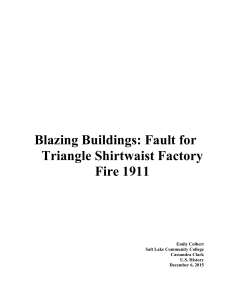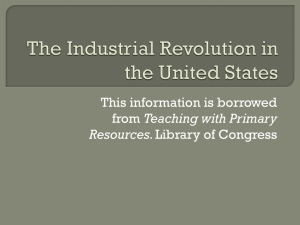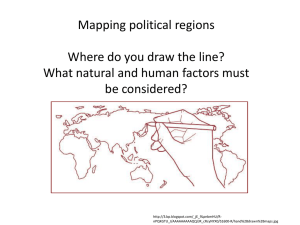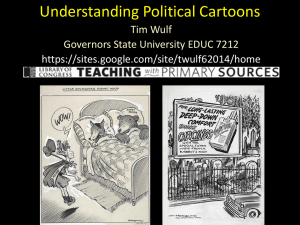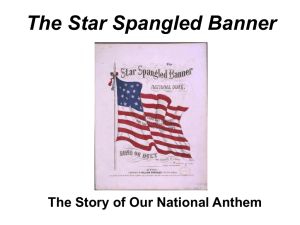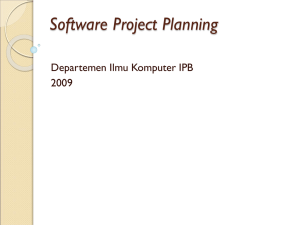Kathleen A. Brown Associate Professor of History St. Edward`s
advertisement
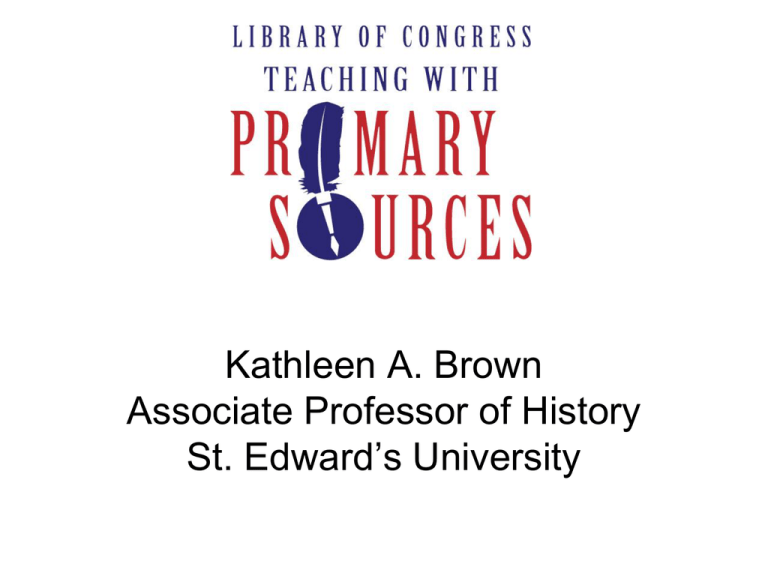
Kathleen A. Brown Associate Professor of History St. Edward’s University I. Why Teach w/ Primary Sources? 1. Engage Students 2. Develop Critical Thinking Skills 3. Construct Knowledge Louis Dalrymple, “Misery loves company; - but they hope soon to be out of it,” Puck 20 March 1901: http://www.loc.gov/pictures/item/2010651389/ II. Inquiry Learning/Project Based Instruction Big Question: What were the arguments for and against American acquisition of the Philippines? • J.S. Pughe, “She is getting too feeble to hold them,” Puck 18 Nov. 1896. http://www.loc.gov/pictures/item/95523064/ • “Little Filipino—If I miss this train I’m a goner!” Daily Public Ledger [Maysville, KY] 6 Aug. 1898, p. 3, http://chroniclinga merica.loc.gov/lcc n/sn86069117/189 8-08-06/ed-1/seq3/ • Uncle Sam You have seen what my sons can do in war now see what my daughters can do in peace. • Ehrhart, “If they'll only be good,” Puck 31 Jan. 1900. http://www.loc.gov/pictures/item/2010651302/ 1. •Dispatch from the Philippines •Great Battle •Insurgents Gaining •More Trouble Expected •Troops Wanted to Suppress Rebellion •Dispatch from the Philippines •Great Force of Insurgents at Iloilo •Aguinaldo in Hiding •Trouble Expected Every Minute •American Troops Needed • “They May Change Masters, But They Can’t Lose Me,” Salt Lake [UT] Herald 16 Jan. 1899, II. Inquiry Learning Big Question: What were the arguments for and against American acquisition of the Philippines? Yoke: “Love one another” Medallion: “In union there is strength” • St. Paul [MN] Globe 27 Nov. 1898, p 1, http://chroniclingamerica.loc.gov/lccn/sn90059523/1898-11-27/ed-1/seq-3/ • J.S. Pughe, “The Aguinaldo guard,” Puck 17 October 1900, http://www.loc.gov/pictures/item/2010651338/ II. How To Get Started 1. LOC, “Why Use Primary Sources?” pdf 2. LOC, “How to Use Primary Sources: A Quick Start Guide” pdf 3. Barbara Stripling, “Teaching Inquiry with Primary Sources,” Teaching with Primary Sources Quarterly (Summer 2009): 2-4: http://www.loc.gov/teachers/tps/quarterly/ 0907/pdf/TPSQuarterlySummer09.pdf 4. LOC, Professional Development Builder, “Analyzing Political Cartoons.” II. How To Get Started 5. LOC, “Analyzing Political Cartoons” pdf 6. Cartoon Analysis Worksheet, Educators and Students, National Archives. 7. Library of Congress [http://www.loc.gov] 8. Contextualizing & Historical Thinking A. Avishag Reisman & Sam Wineburg, “Teaching the Skill of Contextualizing in History,” The Social Studies Vol. 99 (Sept./Oct.2008):202-207. III. Using Cartoons & Documents to Teach the Philippine-American War “If They'll Only Be Good,” Puck 31 Jan. 1900, centerfold. http://www.loc.g ov/pictures/item /2010651302/ • “If They'll Only Be Good” Caption: “Uncle Sam You have seen what my sons can do in war now see what my daughters can do in peace.” • Curriculum Standards: (2011-2012) – §113.41. United States History Studies Since 1877 • (c) Knowledge and skills. (4) History. The student understands the emergence of the United States as a world power between 1898 and 1920. The student is expected to: –(A) explain why significant events, policies, and individuals such as the SpanishAmerican War, U.S. expansionism, … moved the United States into the position of a world power; –(B) evaluate American expansionism, including acquisitions such as Guam, Hawaii, the Philippines, and Puerto Rico • Curriculum Standards: – §113.41. United States History Studies • (c) Knowledge and skills. (29) Social studies skills--critical-thinking skills: –(H) use appropriate skills to analyze and interpret social studies information such as maps, graphs, presentations, speeches, lectures, and political cartoons. • Curriculum Connections: • (c) Knowledge and skills. –(15) Economics -- domestic and foreign issues related to U.S. economic growth from the 1870s to 1920. –(19) Government --explain constitutional issues raised by federal government policy. Types of Assignments • Basic Knowledge – Chronology -- have groups of students organize cartoons into chronological order of development of the Philippine-American War – Active Learning—provide a cartoon to each student & have them research the issues, analogies, or controversies which are portrayed in the cartoon Types of Assignments • Critical Thinking – Have students identify point of view (sometimes called “bias”) of a cartoon and evaluate how someone with a different point of view might have drawn the cartoon differently – Analyzing -- have groups of students analyze cartoons to find the ideological implications of text and images. – Provide a group of cartoons from divergent points of view about the issue. Have students evaluate the issues and arguments involved and arrive at their own conclusions about the issue or event. Types of Assignments • Transference – Have students connect what they are studying with what they have already learned. Ask students, for instance, to make connections between ideals of American Revolutionaries and founders of the Constitution and the AntiImperialists who criticized American acquisition of the Philippines. W.A. Rogers, “Uncle Sam's New Cl[ass in] the Art of Selfgovernment,” Harpers Weekly 27 Aug. 1898. http://www.loc.gov/pictures /item/91705456 “A Voice from the Imperial Dressing Room,” St. Paul [Mn] Daily Globe, 19 May 1899, p.1. • http://chroniclingameric a.loc.gov/lccn/sn900595 23/1899-05-19/ed1/seq-1/ “In the Same Fix,” Houston Daily Post, 14 Nov. 1901, p. 1. • http://chronicling america.loc.gov/l ccn/sn86071197 /1901-11-14/ed1/seq-1/ “Right [Human Liberty] Must Triumph Over Might [Imperialism],” Washington [Wash., DC] Sentinel 18 Nov. 1899, p. 1. http://chroniclingamerica.loc.gov/lccn/sn82016354/1899-1118/ed-1/seq-1/ “It is Reported That We Are Now to Be Severe With the Filipinos,” St. Paul [Minn.] Globe 21 Nov. 1900, p. 1. http://chroniclingamerica. loc.gov/lccn/sn900595 23/1900-11-21/ed1/seq-1/ “The Monroe Doctrine Dead,” San Francisco Call 2 Dec. 1898, p. 6 http://chroniclingamerica.loc.gov/lccn/sn85066387/1898-1202/ed-1/seq-6/ Further images & articles one might use • “Two Points of View,” Houston Daily Post 19 July 1899, p. 1. • http://chroniclingameri ca.loc.gov/lccn/sn8607 1197/1899-07-19/ed1/seq-1/ “Aguinaldo Takes the Oath of Allegiance,” Salt Lake City [Ut] Herald 4 Apr. 1901, p. 1. • http://chroniclingamer ica.loc.gov/lccn/sn85 058130/1901-0404/ed-1/seq-1/ • [“Workingman— ‘Is this protection for American Labor?’”], Washington [Wash., DC] Sentinel 3 Feb. 1900, p. 1. http://chroniclingameri ca.loc.gov/lccn/sn8201 6354/1900-02-03/ed1/seq-1/ • “Imperialism’s Burdens,” Washington [Wash., DC] Sentinel 3 Feb. 1900, p. 1. http://chroniclingameri ca.loc.gov/lccn/sn8201 6354/1900-08-11/ed1/seq-1/ “American Savagery in the Philippines,” Honolulu [H.I. Terr.] Independent 6 May 1902, p. 1 & 4. • • http://chroniclingameri ca.loc.gov/lccn/sn8504 7097/1902-05-06/ed1/seq-1/ http://chroniclingameri ca.loc.gov/lccn/sn8504 7097/1902-05-06/ed1/seq-4/ • Andrew Carnegie, “Carnegie’s Statement on Imperialism,” San Francisco Call 11 May 1899, p. 1. http://chroniclingamerica.loc.gov/lccn/sn85066387/189905-14/ed-1/seq-1/ • “’Water Cure’ of Filipinos is Followed by Court-Martial of General Jacob H. Smith,” San Francisco Call 22 Apr. 1902, p. 1. http://chroniclingamerica.loc.gov/lccn/sn85066387/190204-22/ed-1/seq-1/ • “Natives Will Be Avenged,” San Francisco Call 16 Apr. 1902, p. 1 & 3. http://chroniclingamerica.loc.gov/lccn/sn85066387/190204-16/ed-1/seq-1/ & http://chroniclingamerica.loc.gov/lccn/sn85066387/190204-16/ed-1/seq-3/ Further Resources • Teaching with Cartoons: Web-based Resources. http://faculty.stedwards.edu/kathyb/Teaching_Reso urces/Cartoons.htm • Research Guide, “Teaching with Primary Sources from the Library of Congress,” St. Edward’s University Library. http://stedwards.libguides.com/tps • Library of Congress, Teachers Resources. http://www.loc.gov/teachers/professionaldevelopm ent/tpsdirect/pdplanbuilder/
